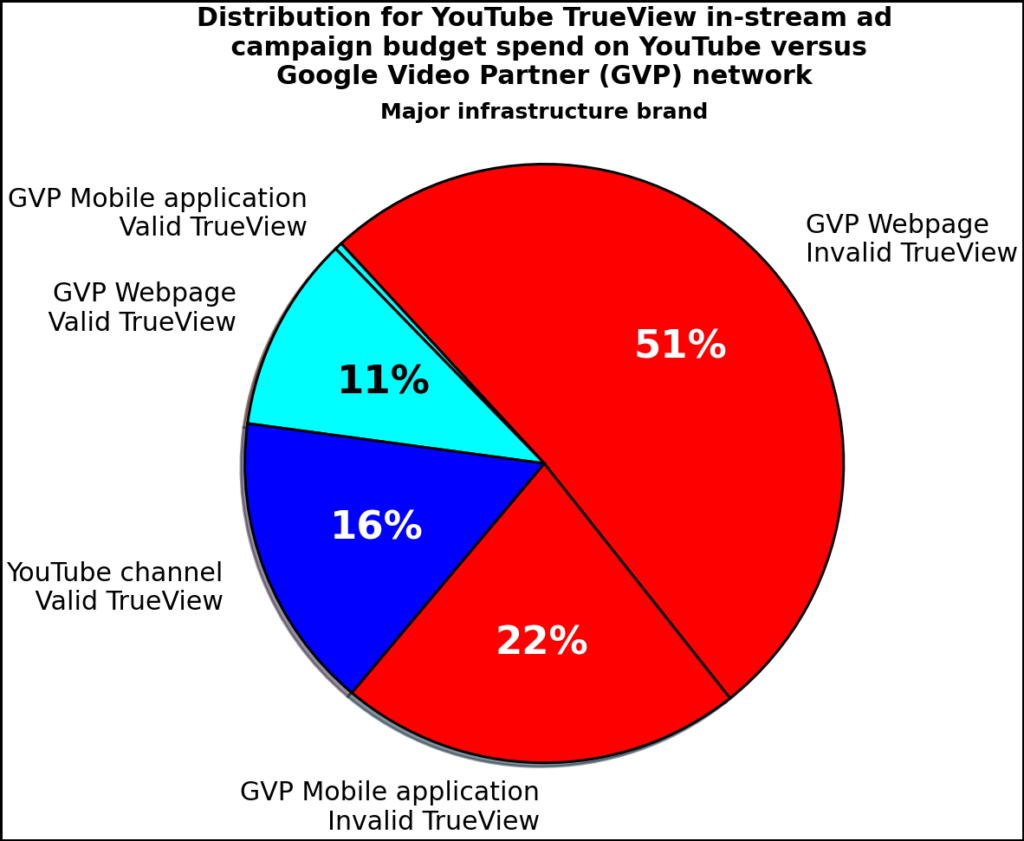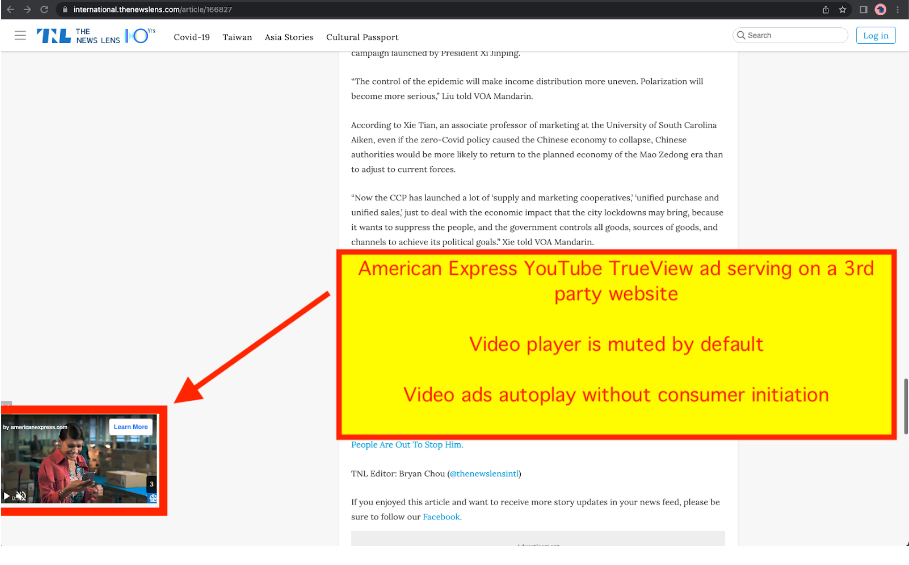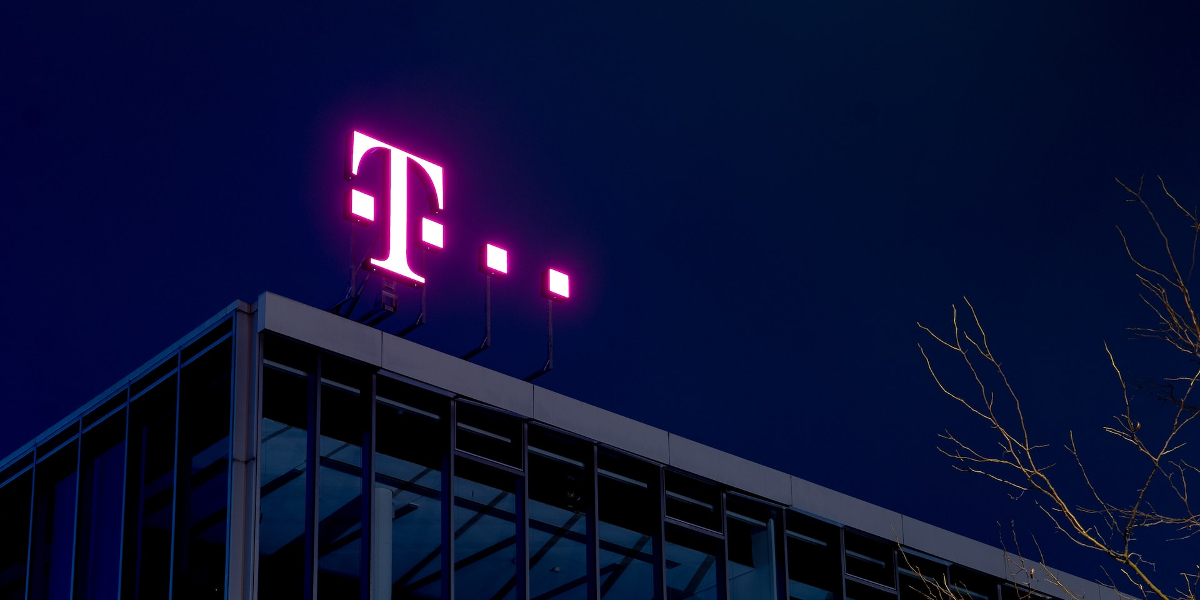New research from Adalytics has revealed that Google violated its own standards when placing video ads on third-party websites, potentially costing advertisers billions of dollars.
Through its Google Video Partner (GVP) program, the tech giant charges a premium to place ads on “high-quality” sites. Google’s TrueView in-stream ads are meant to play before main video content with the audio on, and must be skippable. Under the terms of GVP, brands will only pay for ads that are not skipped.
But the data shows that Google breaches those standards around 80 percent of the time. According to Adalytics, brands are paying for the service when their ads are actually running in small, muted videos to the side of main content, on sites that do not meet Google’s monetisation standards.
The analytics company observed campaigns from more than 1,100 brands that ran over the past three years. The research uncovered that some campaigns saw 42-75 percent of TrueView spend allocated to GVP sites and apps that did not fulfil the requirements. “This misalignment may have cost media buyers up to billions of digital ad dollars,” said Adalytics.
Advertisers that may have purchased misdeclared inventory include advertising giants such as McDonald’s, General Motors and Disney, as well as political bodies including the US Government and European Parliament.
“Highly incriminating”
The violative websites include “piracy sites”, with tens of thousands of copyright takedown requests filed against them; bot servers running from Google Cloud data centers; and Russian websites such as pravda.ru, flagged by NewsGuard as a government tool for propaganda and disinformation.
The research found multiple TrueView ads rendered simultaneously, “stacked” on top of each other, or with the “Skip” button hidden or obscured. Adalytics noted that forcing users to view an ad is a direct violation of the product’s quality standards. “This may have artificially inflated TrueView skippable in-stream ad video completion rates, possibly resulting in higher costs for Google’s advertisers,” said the report.
“The research report by Adalytics is highly incriminating,” said Ruben Schreurs, CPO at media investment consultancy Ebiquity. “Based on the findings and allegations represented within, I see this as a structural misrepresentation of advertising products at best, and downright fraudulent misleading practices at worst.”
However, Google has dismissed what it calls “extremely inaccurate claims”, accusing Adalytics of “unreliable sampling and proxy methodologies.” The company argues that the majority of Google’s video campaigns run on YouTube and not third-party websites. Advertisers can also block websites they wish to avoid, and see where their spend is going, according to Google.
“The claims in the third-party report simply aren’t right,” Marvin Renaud, Director of Global Video Solutions at Google, said in a blog post. “Put simply, over 90 percent of ads on GVP are visible to people across the web – and advertisers are only paying for ads when they are viewed.” He added that all GVP publishers must comply with its standards, and viewability is monitored by third-party verification partners. “Our policies prohibit made for advertising (MFA) content,” said Renaud.
The amount of ad spend wasted on MFA websites is sailing ever closer into view; last week an Association of National Advertisers (ANA) report suggested advertisers spend 15 percent of their budgets on this low-attention (not to mention carbon-intensive) content. But Google has long argued the quality, control and safety of its advertising tools. The findings also follow the EU’s report into a decade of alleged market abuse by Google, which could see the company forced to divest its ad tech business.






